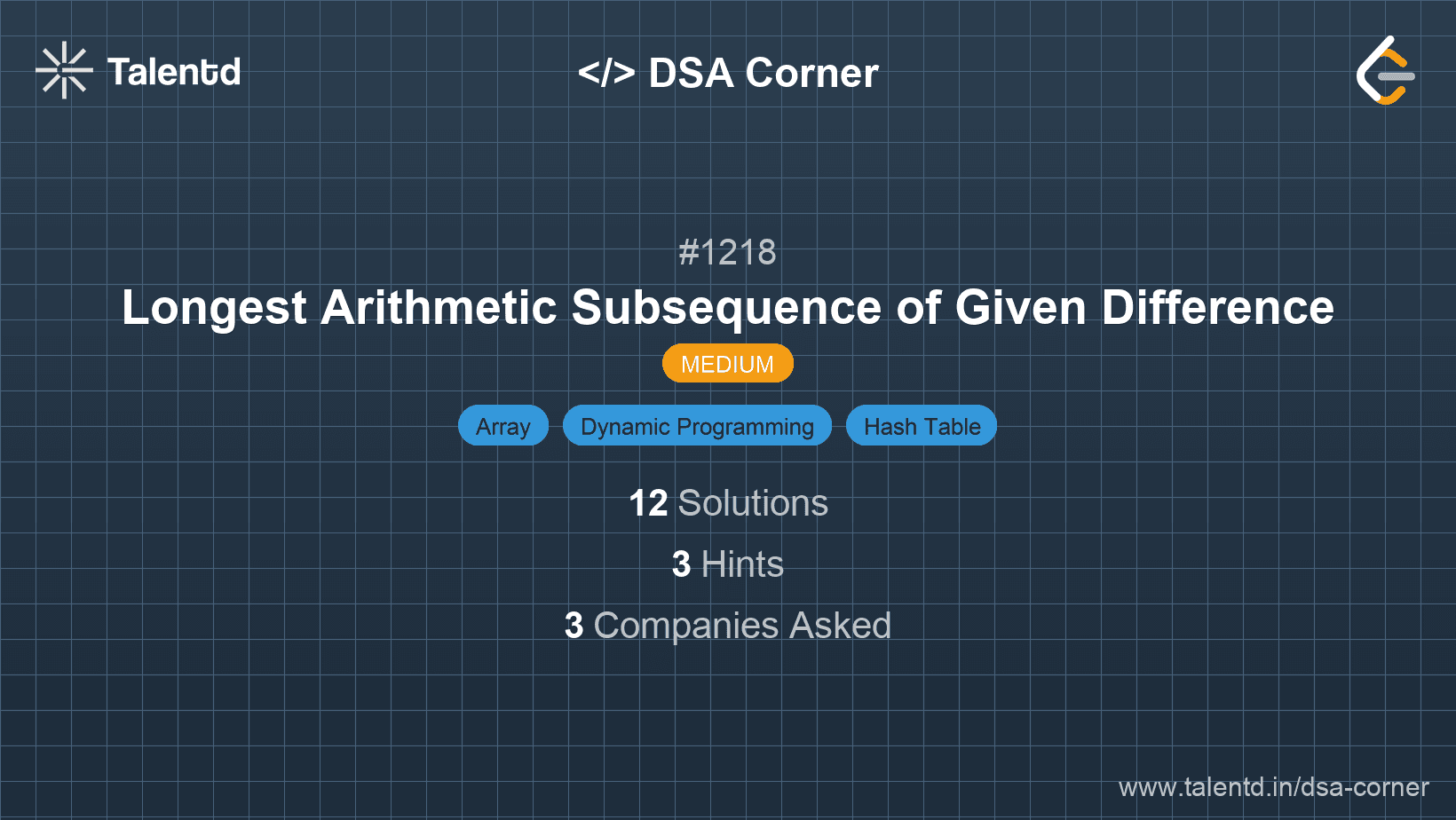
Sponsored
Sponsored
This approach uses a hash map (or dictionary) to keep track of the longest subsequence length that can be achieved ending with a specific value. For each element in the array, we check if there is an arithmetic subsequence ending with the element minus the given difference. If such a subsequence exists, we calculate the current subsequence length. Otherwise, we start a new subsequence from this element.
Time Complexity: O(n), where n is the length of arr. We iterate over the array once.
Space Complexity: O(n), where n is the number of distinct elements in arr stored in the dictionary.
1#include <stdio.h>
2#include <stdlib.h>
3
4#define TABLE_SIZE 20001
5
6int hash(int key
This C solution adopts a simplistic hashing approach to simulate a map-like storage using an array and a hash function. We track subsequences using indices calculated from our hash function.
This approach utilizes an array to store information about each possible element value scaled according to the constraints. For each element in arr, determine if there is a previous subsequence that can be extended using direct array access.
Time Complexity: O(n), where n is the length of arr.
Space Complexity: O(1) (constant size array mentioned in constraints).
The JavaScript solution uses a fixed-size array with alignment offsets to prevent out-of-bound errors, maintaining constant space overhead while determining subsequence lengths.